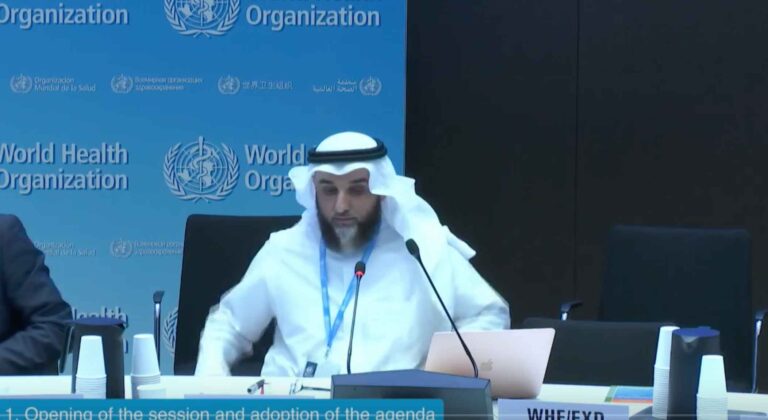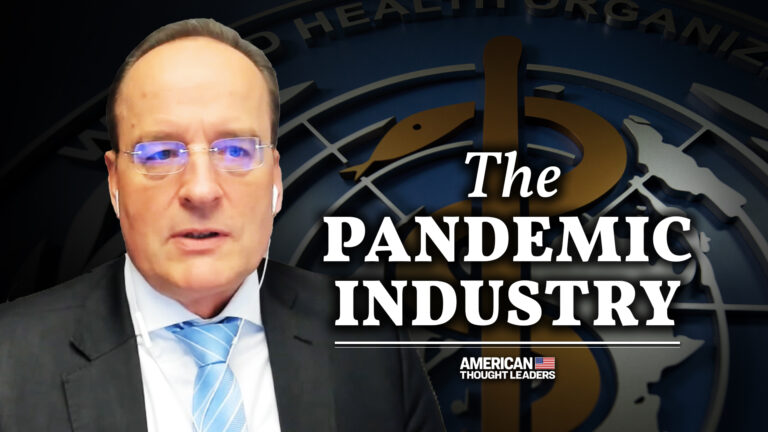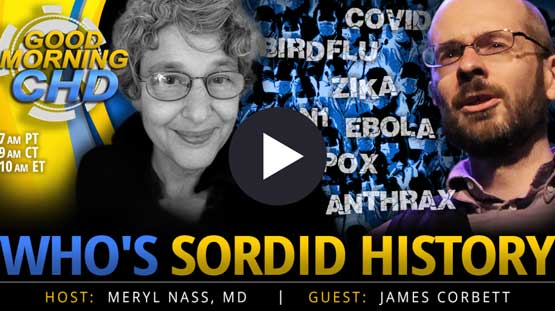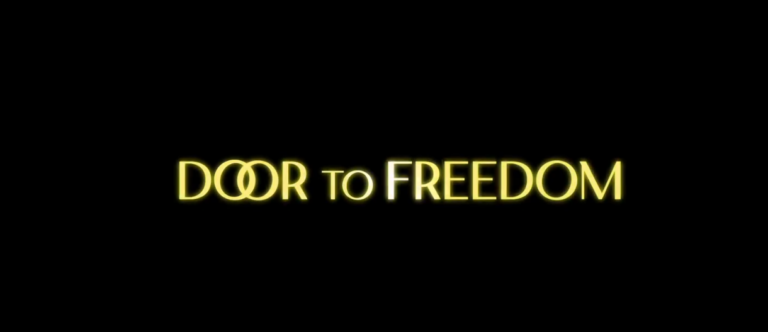by Michael T. Clark, PhD and Meryl Nass, MD
This is an important paper for decision-makers and diplomats: Door to Freedom’s White Paper analyzing the negative implications of the policy decisions made during the COVID pandemic, and how the proposed Pandemic Agreement and IHR amendments will compound these mistakes.
SUMMARY
The new Pandemic Agreement and revisions to the International Health Regulations (IHR) – both legally binding instruments – are being negotiated for adoption during the 77th meeting of the World Health Assembly, May 27 to June 1, 2024.
This article explains why developing country delegates should vote no, and why prudent national, provincial and community public health leaders everywhere should welcome a decision to scrap the current proposals, undertake a serious reflection on what just happened during the COVID-19 pandemic, and begin anew.
1. The premise of a new “era of pandemics” in the 21st century is founded upon a fundamental misreading of the evidence.
The identification of apparently new, emergent virus outbreaks is an artifact resulting from the recent advances in the technology of pathogen testing and identification – PCR, antigen, serology, and digital sequencing – and to the growing reach and sophistication of public health systems worldwide. Most pathogens in the WHO global mapping of viruses should not be described as new or emergent, but newly identified or characterized. Most are also either low virulence or low transmissibility resulting in very low mortality.
Deaths on the order of magnitude of COVID-19 due to naturally occurring pathogenic outbreaks are extremely rare – on the best evidence available, a once-in-129-years event.1 As demonstrated by researchers at Leeds University2, the evidence from the last century and the first 20 years of this century shows that pandemic caseloads, frequency of outbreaks, and lethality reached a peak nearly twenty years ago and have been declining sharply ever since. The urgency of putting in place new and binding arrangements in expectation of an impending global viral attack is not justified by evidence.
2. The COVID-19 pandemic was a major “event” that called for a high level of international consultation and collaboration. But what was truly extraordinary was the policy response – including the vitally important and consequential financial response.
The policy response included travel bans; lockdowns; school closures; mask and vaccine mandates; accelerated vaccine development and curtailed safety and efficacy testing; and widespread indemnification of manufacturers of health products, including medicines, test kits and vaccines against liability and compensation for harm. There was also experimentation with social control, suppression of free speech, and denial of other basic human rights.
Most of these measures were of dubious effectiveness and were disproportionate and inappropriate to the actual threat. The collateral damage from these actions was also historically extraordinary. Lockdowns, travel restrictions, and numerous other controls disrupted supply chains, shut down businesses, denied workers access to employment and income, and placed the global economy in an induced coma. The net effect of these “public health” measures was the largest and sharpest worldwide decline of economic activity since the Great Depression and World War II.
Even more damaging in the long run was how governments responded by pumping out massive amounts of money, the oxygen of economic life, to avoid complete economic and financial collapse and world-wide social and political chaos. Nearly all governments resorted to massive fiscal deficits. Those that had access to hard currency, either through accumulated savings or the power of the “printing press” – were profligate in their spending and managed to cushion the immediate blow. In the first year of the pandemic alone, according to the (unsourced) June 2021 estimate of the G20 High Level Independent Panel on Financing the Global Commons for Pandemic Preparedness and Response, the world-wide cost to governments was $10.5 trillion.
The lion’s share of this sum was generated in the OECD countries, but for smaller, poorer countries without recourse to the printing press, the impacts were smaller in absolute terms, but proportionally much larger, more diverse, and longer lasting.
The economic and financial consequences of the chosen policy responses included disruptions to food and energy supply chains and rising costs of critical commodities, exacerbated by a negative shift in exchange rates as international investment flows came to a halt and hot money exhibited its usual “flight to safety” in the US and EU. Food prices increased for importing countries that lacked easy access to hard currency. While major, prolonged disruptions to food supply chains were avoided, local and national disruptions occurred in many countries. These economic dislocations plunged tens of millions into poverty and many more into malnutrition and food insecurity – this while some few hundred “pandemic billionaires” gained enormously from the “great reset” of the “zoom” economy and from vaccine and medical supply profiteering.
For developing countries, the negative effects of the pandemic response continue to compound. The inflation that exploded in the U.S. and elsewhere as soon as the economy began to reopen led to another ham-fisted policy response authored in the Global North: austerity-inducing interest rate rises (the steepest in more than four decades), which inevitably extended to the whole world, with massive impacts on external indebtedness and dampened investment and growth across most of the developing world.
Rapidly rising debt and debt servicing costs have shrunk public budgets and reduced public investment in education and health, key to future growth and escape from poverty. The World Bank reports that most of the world’s poorest countries are in debt distress. Altogether, the developing countries spent $443.5 billion to service their external government and government-guaranteed debt in 2022; the 75 poorest paid $88.9 billion in debt service in 2022.
3. The pandemic did not “cause” the policy response or the collateral damage; rather, the policy response was an expression of the policy preferences of the narrow base of WHO donor countries and private interests that account for more than 90 percent of the World Health Organization’s funding.
The political consensus, among those who steered the policy response, was not evidence- or science-based and stood, by and large, in sharp opposition to the WHO’s standing recommendations and the cumulative experience of the WHO in dealing with pandemics and public health emergencies.
4. The COVID-19 pandemic was the third “emergency” event in less than 20 years that was converted by a dubious policy response from essentially a reasonably well-contained local affair into an ever-larger global crisis.
First, the 9/11 attacks by Islamic terrorists led to a declaration of an open-ended global “war on terror” financed by massive deficit spending in the U.S. to support two “forever wars” in Afghanistan and Iraq.
Second, the 2008 world financial and economic crisis, which was followed by massive bailouts of banks and other financial institutions, and massive reliance on quantitative easing in the US, and later Europe, protected financial institutions but distorted global finances, depressed investment in developing countries, and choked world trade in commodities, upon which most developing countries depend.
And third, the COVID outbreak, like the other emergencies, spawned a policy response cooked up outside the UN system, but then executed by United Nations institutions: the UN Security Council (for the War in Iraq); the IMF and World Bank (for the financial crisis); and the WHO for the pandemic emergency. In all three instances, poor and working people in both the Global North and Global South bore the brunt of the harm caused by the policy response, while the biggest wealth holders were not only protected but further enriched.
5. In each of these crises, the policy response had strong and lasting impacts on development, but developing nations had no real voice outside of UN institutions. Further, in each of these instances, the real center of decision-making lay outside the multilateral institutions themselves, located instead in informal, notionally temporary but exclusive arrangements such as the “coalition of the willing” formed to support the U.S.-led war against Iraq, the elevation of the G20 to heads of state level in the financial crisis, and the highly organized network of donors and wealthy foundations, philanthropies, and private sector entities who act in concert to direct the activities of the WHO. To add insult to injury, in each case major efforts were made by the United States and others to manipulate, dissemble, and suborn the multilateral institutions.
6. There has not been to date any serious, sustained multilateral undertaking to review and assess (1) the true origin of the COVID-19 pandemic; (2) the decision-making process that led to the policy decisions taken; or (3) the ultimate balance of benefit and harm resulting from the recommended policy response in the immediate, short and medium terms.
There is currently no consensus on the origins of the SARS-COV-2 pathogen. The lead contending theory is a lab leak at the Wuhan Institute of Virology where US and Chinese scientists are known to have been conducting gain-of-function research (research to deliberately create super-pathogens by increasing the transmissibility, virulence or vaccine resistance of known pathogens) using coronaviruses similar to SARS-COV-2. The most compelling alternative theories propose an animal (zoonotic) origin, but no consensus has been reached on the most likely pathway for an animal source to humans. Given the enormous weight of the COVID-19 experience in shaping our understanding of the pandemic threat, further investigation, perhaps under no-fault protection of witnesses, is warranted.
The process through which the WHO Director-General exercised his extraordinary power to declare a public health emergency of international concern (PHEIC) also bears much closer examination. In particular, the risk assessment process and criteria used by the WHO staff who briefed the Emergency Committee and the Director-General should be closely scrutinized to develop guidance that would enable better-informed recommendations for future contingencies.3 The very limited role of WHO Member States in the deliberative process – a process reserved to Member States in the UN Security Council in matters of war and peace – should be carefully reviewed.
Finally, Member States need to compare the relative costs and benefits of the WHO’s COVID-19 recommendations with the varied experiences of countries that departed from the WHO’s recommendations.
7. One of the most negative consequences resulting from the unpopular implementation of WHO-recommended policy measures is the massive erosion of public trust in public health authorities that has taken place since the onset of the COVID-19 pandemic.
This is true of both national and international public health authorities. Still, the WHO is now most at risk of political punishment, owing in large part to the remarkable attention that the pandemic treaty negotiations are (rightfully) receiving from dissenters across the USA and increasingly in capitals across Europe, Japan and Australia, as well as some developing countries.
Descriptions of these dissenters as “anti-vaxxers”, “conspiracy theorists”, “crackpots”, and “populist demagogues” by WHO officials, parroting their donor masters, does a deep disservice to the truth and to the honorable motives behind their dissent. And it only strengthens the perception that the WHO is indeed the responsible center of action that must be defeated.
8. In 2020, the WHO Director-General already had the authority unilaterally to declare a Public Health Emergency of International Concern and to make nominally “non-binding” and practically unenforceable, but nonetheless authoritative recommendations thereafter; the new pandemic treaty and revised International Health Regulations commit Member States to a five-year, $155 billion investment to create a world-wide infrastructure for WHO-centered and directed pandemic surveillance, coordination, monitoring and compliance enforcement.
In the ominous words of jurist Carl Schmitt: “Sovereign is he who decides the exception.”4 Seen in these terms, the decision of the WHA “by consensus” (i.e., without a recorded vote) to delegate decision-making powers to the Director-General that would normally be reserved to the Member States will be a fateful move, made more remarkable by the failure of the Member States to place any meaningful institutional checks on this authority. But perhaps so long as WHO lacked the means to energetically apply its authority, it has been assumed that there was little to fear and the decision to declare a PHEIC could be described as a technocratic decision without serious political import.
If so, the experience of the COVID-19 public health response should be enough to trigger a rethink of these assumptions. And the extensive commitment to “strengthen WHO” not as an instrument of collective action by sovereign states, but as an entity empowered to act suo moto (on its own motion) and to enforce, by various means, compliance with its directives is a clear game-changer.
The following features of the WHO’s pandemic prevention, preparedness and response plans point to political risks and conflicts that, far from strengthening the WHO, in fact become incentives to abandon it:
- the ability to mandate state actions by the WHO;
- the vast, interlinked surveillance structure that is being developed;
- the contemplated use of multilateral funding to ensure operational control and “accountability” of Member States;
- creation of an extensive system of pathogen sharing along with (still) unregulated research and development, including gain-of-function experimentation;
- the designation of fighting “misinformation” and “disinformation” as a core competency (and implied obligation) of Member States;
- the proposed establishment of emergency control over production and distribution of a wide variety of “medical products.”
9. Summing up, the pandemic treaty and the many IHR revisions are not a power grab by the WHO Secretariat, but rather a power grab of the WHO, by its public and private donors.
In the many-mirrored world of multilateralism, things are seldom what they appear to be. In the negotiation of international agreements, the meaning of words often dissolves into “calculated ambiguity”, a common diplomatic practice intended to reduce friction and enable the “successful” conclusion of difficult agreements.
The UN, it is said, “never fails”; but when it does, it is always the Organization that gets blamed. And this is the case here: as the pandemic treaty becomes a lightning rod for pent-up popular frustration and anger over the many failures of the COVID-19 policy response, it is the Organization that has become the focus of scorn and likely retribution, and not the true authors of the many ill-considered policy choices that failed so ignominiously.
10. The vote of the 194 Member States represented at the 77th meeting of the World Health Assembly should be an unambiguous “No” to the treaty and IHR package, both “as is” and as the basis for any future negotiations.
Elements from the current draft agreement may be taken up in a new, expanded and time-bound process, with the following conditions to establish an appropriate and proportionate evidence-, science- and comparative experience-based foundation for future deliberation and negotiation:
- There should be a thorough examination of the decision-making process for declaring a PHEIC, both as it was exercised in the COVID-19 declaration and on prior and subsequent occasions. The process shall consider the need to differentiate between emergencies of different magnitude and type of threat, to utilize standardized practices of risk assessment, to estimate potential collateral damage, to perform cost-benefit analysis, and to develop practices to ensure a proportionate and well-reasoned response. Above all, the review should devote considered attention to lack of representation of Member States in the deliberative as well as the decision-making process.
- There should be an independent, critical and deliberately antagonistic (“Team A/Team B”) review process to assess how WHO recommendations for action, including public health and social policies, were formulated and promulgated by the WHO Secretariat, the quality of the evidence base upon which decisions were made, and the reasons for overturning previous guidance and recommendations. The role of Member States and non-state actors in this process should also be explored, along with the variable ways that Member States responded to the recommendations. Particular attention should be paid to the ways that Members did or did not exercise independence in interpreting their obligations and in adapting centralized recommendations to distinctive national circumstances.
- There should be a careful, extensive examination of the multidimensional impacts of the full policy response, including fiscal policies and their differential impacts across national territories and over time, to better understand the implications of different policy choices in future. This review should be as dispassionate and transparent as possible, recognizing that rebuilding trust in public authority is an important objective of this review process. Actors and actions should not be characterized in politicized or pejorative terms, while the basis and impact of real policy should be examined and tested against evidence.
- The variable ways in which Member States followed, adapted, or rejected WHO recommendations provide a natural experiment yielding important evidence of the benefit or harm of different policy choices in varying circumstances. A disciplined and innovative effort should be undertaken, perhaps through town halls jointly sponsored by WHO and national health authorities, to collect and assess evidence to demonstrate the value of, and provide guidance on how to encourage, national and community ownership through a more flexible and locally adaptable policy response process. Evidence, including Cochrane meta-analyses of peer-reviewed studies conducted by licensed clinicians, should be reviewed to assess:
- the potential of alternative therapeutic approaches to contain viral infections.
- the impact on individuals of alternative public health and social policies to contain viral spread while minimizing disruption of core economic, health, and food systems.
- Particular attention should be paid in this exercise to the extent to which the sanctity of the doctor-patient relationship in clinical decision-making was or was not protected, and how it can be better protected in the future.
- There should be a careful analysis of all existing evidence of the origins of the COVID-19 pandemic. In the matter of the lab leak hypothesis, US, Chinese and other researchers may be provided exemption from prosecution for any actions that they may disclose: this is intended to maximize the likelihood of establishing the most complete and candid assessment possible. The inquiry should be conducted in a way that sheds additional light on the potential value and risk of gain-of-function research. Findings should be made public in a way that provides important stimulus to informed international debate and assessment of the need and modalities to outright ban or to stringently regulate such research.
CONCLUSION: The best option, considering the issues highlighted here, would be a complete restart of the negotiating process based on new premises, a more open and inclusive Member States-led process, and sound, appropriately humble and truthful respect for science and its limitations, evidence and countervailing evidence, the wisdom of experience and acknowledgement of legitimate differences.
To simply vote no would leave the current situation – the situation that led to the many COVID-19 pandemic failures – unaddressed. But any putative “benefit” of the new treaty is likely to be marginal at best. More important, the treaty and amendments as they are currently written do enormous, identifiable harm and would leave everyone, except those with stakes in Big Pharma, IT services, and global finance, far worse off.
___________________________
M. Marani et al. (2021). Intensity and frequency of extreme novel epidemics, Proceedings of the National Academy of Science (PNAS). https://doi.org/10.1073/pnas.2105482118 (as corrected)
D. Bell et al. (2024). Rational Policy over Panic: reexamining Pandemic Risk within the Global Pandemic Prevention, Preparedness and Response Agenda, REPPARE Report, University of Leeds, UL. https://essl.leeds.ac.uk/dir-record/research-projects/1260/reevaluating-the-pandemic-preparedness-and-response-agenda-reppare
The WHO reports that two meetings of the Emergency Committee International Health Regulations (2005) were held prior to the decision to declare a PHEIC. WHO (30 January 2020). Statement on the on the second meeting of the International Health Regulations (2005) Emergency Committee regarding the outbreak of novel coronavirus (2019-nCOV). https://www.who.int/news/item/30-01-2020-statement-on-the-second-meeting-of-the-international-health-regulations-(2005)-emergency-committee-regarding-the-outbreak-of-novel-coronavirus-(2019-ncov)
Carl Schmitt (1922; rev. 1934; English trans. 1985), Political Theology: Four Chapters on the Concept of Sovereignty (Cambridge, Mass: The MIT Press).








